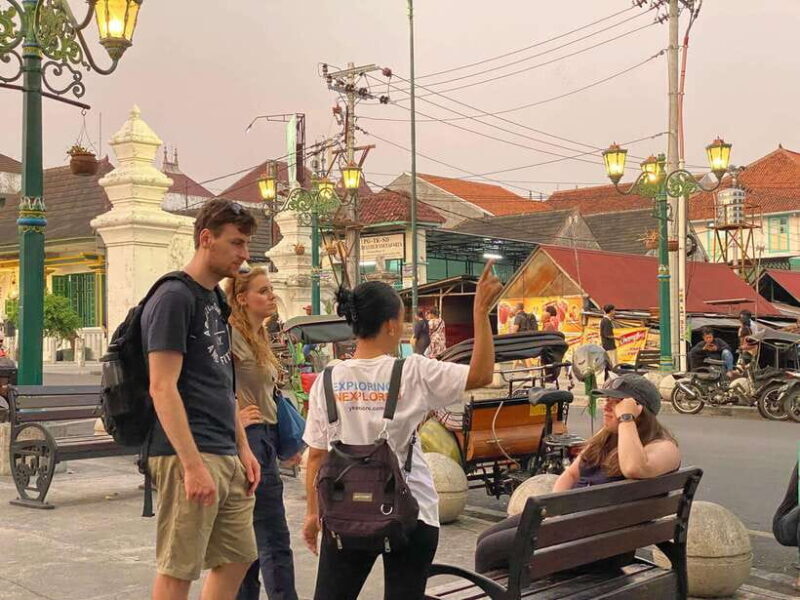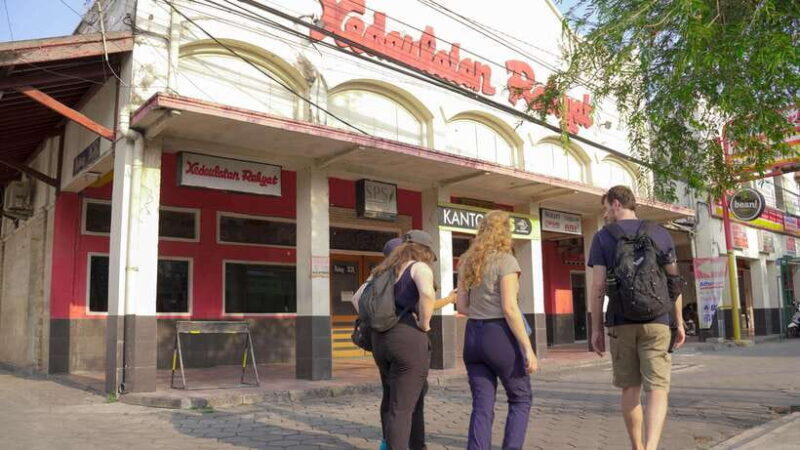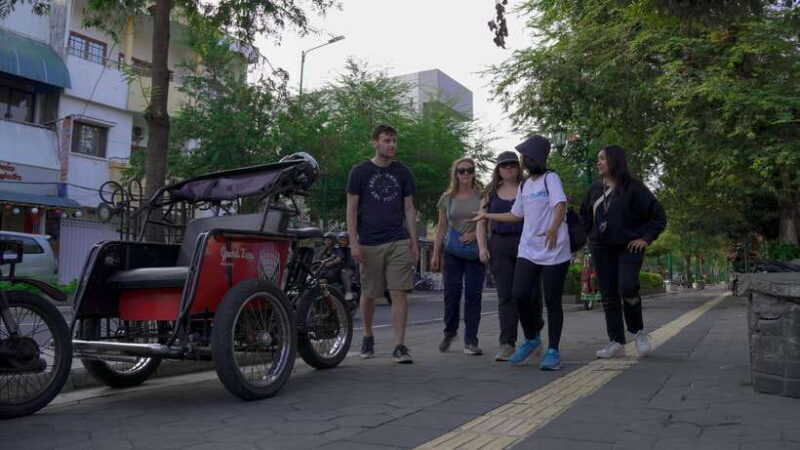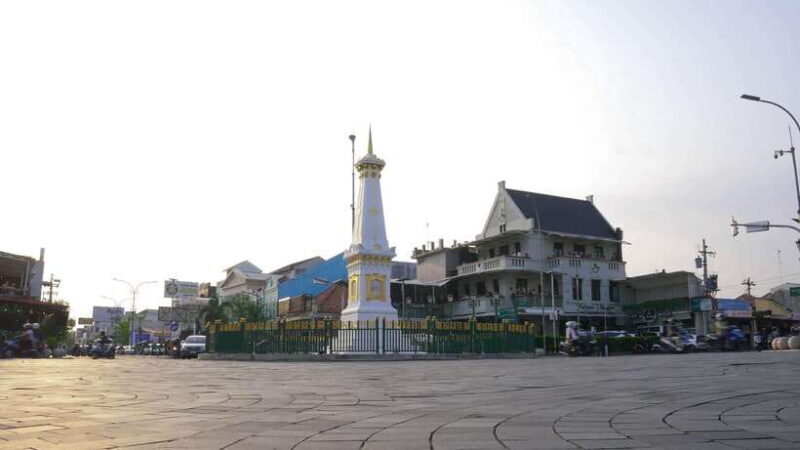Exploring Yogyakarta’s colonial past through a walking tour offers a fascinating mix of history, architecture, and local narratives. This experience, offered by YKExplore, guides you through key sites that reveal how Dutch influence shaped the city’s landscape and its people’s lives. Whether you’re a history enthusiast or simply curious about Indonesia’s colonial chapters, this tour provides a balanced view—not just the Dutch perspective, but also the Indonesian voice.
Two things we really appreciate about this tour are the knowledgeable guides who make history come alive with engaging stories, and the fact that it covers a wide range of historic sites in just two hours—an excellent value for such an in-depth experience. The only caveat? It’s a walking tour of around 2 hours, so good footwear and a moderate level of mobility are recommended.
This tour is best suited for travelers who want a compact, affordable introduction to Yogyakarta’s colonial era, especially those interested in architecture, history, and local culture. It’s perfect if you prefer walking and want to combine sightseeing with storytelling, rather than a bus-based tour.
Key Points

- Authentic insights into Yogyakarta’s colonial past from both Indonesian and Dutch perspectives
- Compact and affordable at just $19 per person for a two-hour experience
- Expert guides who bring history to life with detailed stories and local context
- Visiting iconic historic buildings and sites along Jalan Mangkubumi and beyond
- Includes local narratives, not just the colonial view, for a fuller understanding
- Accessible for most with a moderate walking pace and an emphasis on cultural diversity
An In-Depth Look at the Colonial Heritage Tour

You can also read our reviews of more walking tours in Yogyakarta
Starting Point: The Tugu Monument
Your journey begins at the Tugu monument, a symbol of unity and resilience since its construction by Sultan Hamengkubuwono I. This monument isn’t just a landmark—it’s a statement of independence and local strength, viewed through an Indonesian lens. Your guide will highlight its significance as a national symbol, setting the tone for a tour that balances local pride and colonial history.
The Dutch Connection at Jalan Mangkubumi
Walking down Jalan Mangkubumi, you’ll pass the Kantor Kedaulatan Rakyat, once a hub where the press fought for freedom. This site underscores the crucial role of media in Indonesia’s fight for independence, a narrative often overlooked in colonial settings. It’s a powerful reminder of how local voices resisted occupation.
Colonial Luxury: Hotel Toegoe
Next, the Hotel Toegoe offers a stark contrast. Once the luxurious residence of Dutch officials, this building exemplifies the privileges enjoyed by colonizers. From the outside, it hints at a world of opulence, a world away from the struggles experienced by local residents under colonial rule.
More Great Tours NearbyThe Tetengger Yogya Kembali Monument
As you stroll further, the Tetengger Yogya Kembali monument honors Yogyakarta’s pivotal role in Indonesia’s independence movement. This site helps you understand the city’s strategic importance and its contribution to the country’s liberation.
You can also read our reviews of more guided tours in Yogyakarta
- Half-Day Tour Borobudur From Yogyakarta With Ticket & Guide
- From Yogyakarta: Dieng Plateau Golden Sunrise Guided Trip
- Borobudur All Access & Prambanan Guided Tour With Entry Fees
- Yogyakarta: Borobudur and Prambanan Temple Guided Tour
- Yogyakarta: Private Customizable Guided Tour
- From Yogyakarta: The Beauty Of Dieng Guided Day Tour
Colonial Governance and Multicultural Heritage
Passing by sites like the Grand Inna Hotel and Gedung DPRD, your guide will explain how colonial governance structures influenced the political landscape. The Gerbang Kampung Ketandan opens a window into Yogyakarta’s multicultural makeup, especially the Chinese-Indonesian community, highlighting how diverse groups navigated colonial policies.
Traditional Markets and Economic Life
Reaching Pasar Beringharjo, you’ll witness the blending of traditional Javanese life with colonial economic systems. The market is lively and colorful, a living testament to how local communities adapted and persisted amidst colonial influence.
Symbols of Colonial Control and Resistance
The Monumen Ngejaman (also called “Wayah Titiyoni”) is a clock that carried colonial symbolism, but also a unique local story about its reception. Your guide might share how such symbols were both tools of control and objects of local interpretation.
Religion and Resistance
Visiting GPIB Marga Mulya, you will learn about religion’s layered role during colonial times—both as a means of social cohesion and a form of resistance. Religious sites like this one reveal how faith intertwined with colonial and local identities.
Colonial Administrative Buildings
The tour moves on to Gedung Negara, where Dutch officials once resided, overseeing the city’s affairs. The imposing Benteng Vredeburg fortress, originally built to monitor the Sultan’s court, now stands as a symbol of Dutch enforcement and control. Its architecture and history provide a tangible link to the colonial power structures.
Economic Institutions
Sites like Kantor Pos Besar and Bank Indonesia once fueled colonial interests, often at the expense of local prosperity. These buildings underscore how colonial economic policies shaped the city’s development.
The Fight for Sovereignty: Monumen Serangan 1 Maret
The tour’s emotional endpoint is at Monumen Serangan 1 Maret, commemorating the 1949 armed struggle for independence. It’s a powerful reminder of Yogyakarta’s—and Indonesia’s—fight to reclaim sovereignty.
End of the Tour: Gereja Santo Fransiskus Xaverius
Finally, your walk concludes at Gereja Santo Fransiskus Xaverius, a church that symbolizes the diverse, multicultural colonial legacy. The stories shared here are nuanced, reflecting the grandeur and hardships faced during this period.
The Experience: What It Feels Like to Walk Through History

While the tour covers many sites, it’s the guides’ storytelling that makes this experience memorable. With reviews praising guides like Gavi and Adi for their in-depth knowledge and engaging manner, you’ll find yourself genuinely interested in each story and its relevance to today’s Yogyakarta.
The walk is paced comfortably, with just enough time to appreciate each site without feeling rushed. Expect to see historic architecture, listen to stories about colonial administration, and learn about the local resistance. The inclusion of local narratives enriches the experience, offering perspectives often missing from standard history books.
Value and Practicality
At $19, this tour is excellent value. It’s a concise but comprehensive introduction to Yogyakarta’s colonial past, making it perfect for travelers short on time but eager for authentic insights. The tour includes water and is guided in English—both practical touches that enhance comfort and understanding. Since food and drinks are not included, you might want to bring a snack, especially if you plan to extend your exploration afterward.
Group Size and Accessibility
Though the exact group size isn’t specified, guided walking tours typically offer intimate experiences, which allow for questions and interactions. The tour is not suitable for those with mobility impairments, given the walking involved.
Who Should Consider This Tour?

If you’re interested in history, architecture, or local stories, this tour hits the mark. It’s ideal for travelers who prefer a walkable, engaging, and affordable way to understand Yogyakarta’s colonial heritage. It’s also well-suited for those who appreciate guides who can tell stories with passion and depth, making the past come alive.
However, if you’re looking for a luxury experience or a bus tour with minimal walking, this might not be the best fit. Also, if mobility is an issue, you might want to consider alternative approaches, as the tour involves a fair amount of walking.
The Sum Up
This Yogyakarta Colonial Heritage Guide Walking Tour offers a well-rounded, affordable, and engaging way to explore the city’s colonial history. You’ll walk through historic sites, listen to compelling stories from knowledgeable guides, and gain a new appreciation for Yogyakarta’s multifaceted past. Whether you’re a history buff, architecture lover, or simply curious about Indonesia’s colonial chapters, this tour delivers genuine value and insight.
It’s best suited for those who enjoy walking, storytelling, and discovering history firsthand. The tour’s focus on local narratives alongside colonial history provides a balanced view that enriches your understanding of this vibrant city. With excellent reviews highlighting its guides and memorable stops, it’s a dependable choice for a meaningful introduction to Yogyakarta’s past.
FAQ

How long is the tour?
It lasts approximately 2 hours, making it a perfect short introduction to Yogyakarta’s colonial sites.
Where does the tour start and end?
It begins at the Yogyakarta meeting point, marked by a YKExplore sign, and ends back at the same location, near Tugu.
What is included in the price?
Your tour includes an English-speaking guide and water. Food and drinks are not included.
Is this tour suitable for children or people with mobility issues?
It’s best suited for those able to walk comfortably for about two hours. It’s not ideal for people with mobility impairments due to the walking involved.
Can I cancel or reschedule?
Yes, you can cancel up to 24 hours in advance for a full refund. You can also reserve now and pay later, offering flexibility.
Are there other similar experiences in Yogyakarta?
Yes, there are other tours focusing on temples, caves, or food, but this one offers a focused deep dive into colonial history from a local perspective.
What makes this tour stand out?
The combination of local narratives, a well-chosen route, and knowledgeable guides creates a richly authentic experience.
Is this tour good value for money?
Absolutely. For just $19, you gain a detailed view of Yogyakarta’s colonial past that would be hard to replicate independently in such a short time.
More Walking Tours in Yogyakarta
- Night Walking Tour of Yogyakarta Cosmological Axis Landmark
- Yogyakarta: Guided City Walk and Food Tour
- Yogyakarta : Historical Night Walk and Street Food Tasting
- Yogyakarta walking tour: Gourmet Stroll & Nightly Highlights
- Yogyakarta: The Oldest Neighborhood Walking Experience
- Yogyakarta: Culinary Food and Walking Tour with Local
More Tours in Yogyakarta
- Yogyakarta: Borobudur and Prambanan Temples Guided Tour
- YOGYAKARTA ; MERAPI VULCANO JEEP TOUR AND PRAMBANAN TEMPEL
- Yogayakarta : Jomblang Cave and Pindul Cave Tour
- Yogyakarta: Borobudur Climb and VW Safari Tour
- YOGYAKARTA CITY TOUR,SULTAN PALACE,WATER CASTLE AND CRAFTS.
- UNESCO Tour: Borobudur Top Access (Ticket Help) & Prambanan
More Tour Reviews in Yogyakarta
- Yogyakarta: Borobudur and Prambanan Temples Guided Tour
- YOGYAKARTA ; MERAPI VULCANO JEEP TOUR AND PRAMBANAN TEMPEL
- Kembang Soka Waterfall: A Refreshing Nature Escape
- Yogayakarta : Jomblang Cave and Pindul Cave Tour
- Yogyakarta: Jomblang Cave, Pindul Cave and Oyo River Tubing
- Yogyakarta: Borobudur Climb and VW Safari Tour
Not for you? Here's more nearby things to do in Yogyakarta we have reviewed
- Yogyakarta: Borobudur and Prambanan Temples Guided Tour
- YOGYAKARTA ; MERAPI VULCANO JEEP TOUR AND PRAMBANAN TEMPEL
- Kembang Soka Waterfall: A Refreshing Nature Escape
- Yogayakarta : Jomblang Cave and Pindul Cave Tour
- Yogyakarta: Jomblang Cave, Pindul Cave and Oyo River Tubing
- Yogyakarta: Borobudur Climb and VW Safari Tour
- Yogyakarta: Sunset at Prambanan Temple & Ramayana Ballet
- Yogyakarta: JOMBLANG CAVE Adventure with LIVE DRONE Shoot
- Yogyakarta : merapi sunrise, jomblang and pindul caves trip
- YOGYAKARTA CITY TOUR,SULTAN PALACE,WATER CASTLE AND CRAFTS.
- UNESCO Tour: Borobudur Top Access (Ticket Help) & Prambanan
- Yogyakarta: Mount Bromo and Ijen Volcano Tour to Bali
